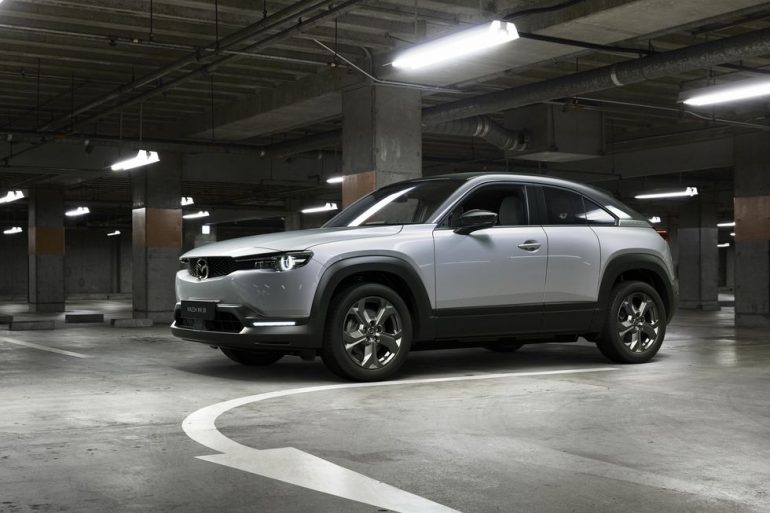
We knew it was coming and from the initial scrutiny from many we believe Mazda knew the time would come to axe the MX-30. Mazda has announced its decision to discontinue the MX-30 electric crossover after the 2023 model year. Instead, Mazda will shift its focus to plug-in hybrid models, such as the 2024 CX-90 PHEV and the eventual CX-70 PHEV, as well as non-plug-in hybrids like the CX-50 Hybrid. Despite being available for sale in California for three model years, the MX-30 failed to make a significant impact, with only 181 units sold in 2021, 324 in 2022, and a meager 66 through June of this year. These modest sales figures were seemingly anticipated by Mazda, as they reported a sold-out production run in the U.S. for the 2022 model year.
One factor that likely contributed to the lackluster reception of the MX-30 was its underwhelming range. Equipped with a 35.5-kWh battery and an EPA-rated range of 100 miles, the electric crossover faced stiff competition from rivals with better performance and more extended driving ranges. Moreover, its starting price of $35,385 after destination was considerably higher than competing models like the Chevrolet Bolt and Bolt EUV, which also retained the benefit of a $7,500 federal tax credit—a perk not available to Mazda’s electric offering. The Bolts surpassed the MX-30 in terms of horsepower, acceleration, and range, making the latter a less attractive option for eco-conscious consumers.
Nevertheless, the Mazda MX-30 does possess its unique appeal, particularly in its styling and material quality. Although the U.S. market will bid farewell to the full-electric version, some other markets will continue to enjoy a redesigned MX-30 R-EV with an 830-cc range-extending rotary engine. With a reduced battery capacity of 17.8 kWh, the R-EV is estimated to have 85 kilometers of pure-electric driving range on the WLTP cycle—roughly half of what the U.S. electric version could achieve.
Mazda’s future, however, holds promise for a more substantial battery-electric push, as the company plans to develop two EV lines—one based on an existing architecture, and another built on an entirely new platform. There are reports of a potential collaboration with Toyota, providing access to a new EV architecture designed to achieve a remarkable range of over 745 miles when powered by next-gen battery technology. As Mazda ventures into this electrifying future, the automotive landscape is sure to witness exciting innovations and a renewed focus on sustainable mobility.

Lloyd Tobias is a seasoned automotive journalist and passionate enthusiast with over 15 years of experience immersed in the world of cars. Whether it’s exploring the latest advancements in automotive technology or keeping a close pulse on breaking industry news, Lloyd brings a sharp perspective and a deep appreciation for all things automotive. His writing blends technical insight with real-world enthusiasm, making his contributions both informative and engaging for readers who share his love for the drive. When he’s not behind the keyboard or under the hood, Lloyd enjoys test driving the newest models and staying ahead of the curve in an ever-evolving automotive landscape.